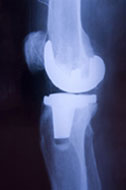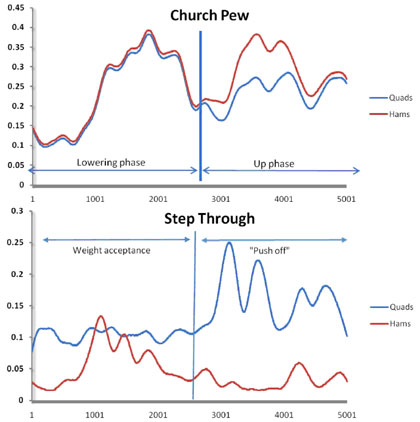|
PT Classroom - The Initial Investigation of the Church Pew Exercise (CPE) to Facilitate Quadriceps Function Following Total Knee Arthroplasty ׀ by John O'Halloran DPT, OCS, ATC, CSCS, Cert MDT |

Dr. John W. O'Halloran, DPT, PT, OCS, ATC, CSCS, cert MDT, is a licensed Physical Therapist and Athletic Trainer with over 24 years of experience in the field of rehabilitation. He is a board certified orthopaedic clinical specialist by the American Physical Therapy Association. He earned his post-professional Doctor of Physical Therapy from Temple University. Currently, Dr. O'Halloran is a director of physical therapy/sports medicine at Southeastern Orthopedics in Greensboro, North Carolina, co-owner of GOSMC Properties, LLC and owner of O'Halloran Consulting, LLC in Summerfield, North Carolina. He has also worked in a variety of settings including universities and hospitals. Dr. O'Halloran is also a former orthopedic instructor at the physical therapy assistant program at Guilford Technical Community College in Greensboro, North Carolina. In 1999, he became credentialed with the McKenzie Institute in the mechanical diagnosis and treatment of the spine. Dr. O'Halloran is also a certified functional capacity evaluator in the Blankenship Method. His unique evaluation and treatment skills make him a sought after clinical instructor for physical therapy and athletic training topics. He has spoken both locally and internationally on topics such as sports specific rehabilitation of the shoulder, spine rehabilitation and treatment of foot and ankle injuries. Dr. O'Halloran has studied orthopedic and sports therapy abroad in Australia and New Zealand. His post graduate work has included manipulative therapy. His wide range of clinical experience combined with his extensive knowledge in the fiscal management of physical therapy outpatient rehabilitation services make him a very knowledgeable and skilled instructor. For a complete listing of upcoming courses for John O’Halloran, click here. |
|
The Initial Investigation of the Church Pew Exercise (CPE) to Facilitate Quadriceps Function Following Total Knee Arthroplasty |
| Introduction |

500,000 total knee replacements are performed in the USA
annually (1). Knee replacements are expected to rise to 3
million by 2030 (2). When surveyed total knee replacement
patients rate their satisfaction as very high when the
studied question is inquiring about pain differences pre and
post surgery. In contrast to the self reported outcomes,
functional performances measures, such as the timed
stair-climbing or walking test, depict only modest
improvements following TKA (3). Total knee arthroplasty
reduces pain and improves health-related quality of life in
90% of patients (4). However when these same patients are
asked about function they rate their satisfaction very low
one year post knee replacement (5, 6). The goals of total
knee arthroplasty are to decrease pain, improve functional
mobility, such as walking, stair climbing and to promote
return to physical activity. It is well established that TKA
reduces pain post surgery however 30% of patients report
dissatisfaction in their physical abilities 1 year following
the surgery (5). Statistically one year after post-op TKA
patients walk 18% slower and climb stairs 51% slower and
have quadriceps deficits of nearly 40% than their age
matched non total knee counterparts (6, 7). Approximately
75% of TKA patients report difficulty negotiating stairs
(6). Another staggering statistic is that 24% of total knee
patients fall in the first year (8). In 2000 Lingard
reported that only 26% of TKA patients are referred to
outpatient rehabilitation following total knee arthroplasty
(9). Based on the above mentioned information it is
imperative that today’s rehabilitation programs for TKA
needs to be critically examined and a new thinking process
be implemented . Failure to do so can definitely impede the
ability of the TKA patient’s long term functional abilities.
Joint Replacement Quadriceps Facilitation Exercise-"The
Church Pew": it has been documented in the literature
that prior to a knee replacement surgery the patient can
have at least a 20% quadricep deficit. This deficit persists
following a total knee replacement. Traditional knee
replacement exercises do not specifically address the neural
inhibition that occurs in the quadricep muscle. The
persistent inhibition of the quadricep muscle affects a
total knee replacement patient’s walking and stair climbing
abilities. The "church pew" exercise facilitates the
quadricep by causing an involuntary muscle contraction, just
the way the quadricep muscle functions during the gait
cycle. Traditional quadricep exercises are volitional
contractions and thus do not stimulate the muscle
functionally. The "church pew" exercise is a great way to
get that neurological-re-education and augment the
traditional exercises. The church pew exercise is for
neuromuscular re-education of the quadricep and augments all
the other traditional quadricep exercises. I recommend that
you assess your patients gait before and after the exercise
and document the change in stance time, speed and the
patients subjective comments post exercise. · Age 58-83, 14 females 8 males · Acute increases of 17% for TMWT(Ten Meter Walk Test) and 18% improvement in 12 Step Stair Test Conclusion When observing this very initial evidence it appears that the church pew exercise might be more relevant to improve activation of the quadriceps during weight acceptance So the question we should be asking ourselves was how could a simple exercise like the CHURCH PEW EXERCISE acutely improve TKA patients walking speed and stair climbing abilities? I would like to discuss a couple of thoughts I have. First of all the CHURCH PEW EXECISE facilitates an involuntary quadriceps contraction at the specific angle of motion that the lower extremity goes through during gait. This result in a neural drive to the kinetic chain that does not exist with any of the standard therapeutic and kinetic activities performed during TKA rehab. I believe that triggering this neuromuscular drive enhances the effectiveness of the traditional hypertrophy exercises clinicians use to strengthen patients and improve gait following total knee arthroplasty. I also strongly feel that the CHURCH PEW EXECISE facilitates ankle mobility that is often lacking following TKA. As stated previously TKA patients tend to hold their ankle in a rigid position at initial contact through push off. This results in the inability of the kinetic chain to properly go through the necessary supination at initial contact, pronation at mid stance and re-supination at push off. If the ankle joint is held rigid, the sequence of the gait cycle is obviously compromised. The CHURCH PEW EXERCISE allows the natural femoral and tibia rotational movements during gait creating the necessary stride length , cadence and proprioception. My findings also are in agreement with the Blade et al article that stressed that more progressive rehabilitation programs need to be performed following total knee arthroplasty (15). Today knee arthroplasty is being performed with advanced surgical techniques such as computer –assisted guidance and minimally invasive approaches therefore it is imperative that the rehabilitation clinician augments these advances with corrective therapeutic exercises and activities that facilitate functional outcomes far superior than what has been reported in the literature to date.
Last revised: December 9, 2010
References |
|
|
|
|








